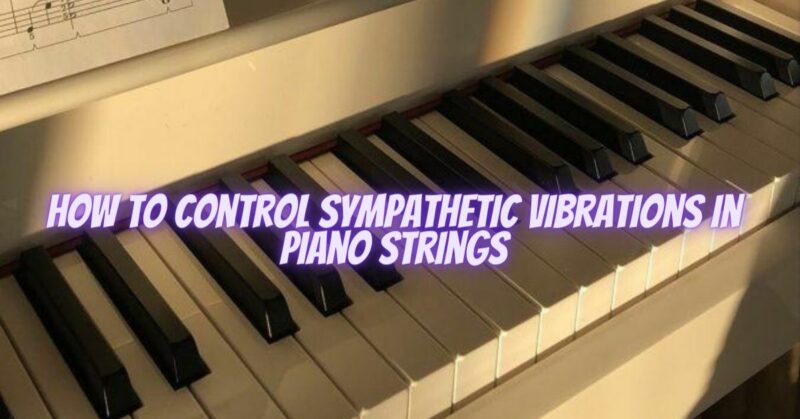When you listen to a piano being played, you may notice that the sound is not just a single pure tone but has a rich and complex quality. This complexity is a result of the presence of overtones in the piano’s sound. Overtones are higher-pitched frequencies that accompany the fundamental pitch of each piano string. They play a crucial role in shaping the unique timbre and character of the instrument. In this article, we will explore piano string overtones, how they are produced, and their significance in creating the piano’s beautiful and diverse sound.
How Overtones are Produced in Piano Strings:
When a piano string is struck or plucked, it begins to vibrate, producing a fundamental frequency. This fundamental frequency corresponds to the pitch that we hear when the key is played. However, the string does not vibrate only at its fundamental frequency; it also vibrates at higher frequencies, known as overtones or harmonics.
Each piano string has a series of overtones, with each overtone having a frequency that is an exact multiple of the fundamental frequency. The first overtone is the second harmonic and has twice the frequency of the fundamental. The second overtone is the third harmonic and has three times the frequency of the fundamental, and so on.
Significance of Overtones in the Piano’s Sound:
- Richness and Complexity: The presence of overtones gives the piano’s sound its richness and complexity. They add layers of frequencies that combine with the fundamental to create a full and harmonically diverse tone.
- Differentiation of Instrument Sounds: Overtones help distinguish the sound of the piano from other instruments. The unique pattern of overtones in the piano’s sound sets it apart and gives it its distinctive character.
- Timbre and Tone Color: The distribution and intensity of overtones contribute to the timbre or tone color of the piano. The balance of overtones in a piano’s sound can result in bright, warm, mellow, or brilliant timbres.
- Perception of Duration: The presence of overtones affects our perception of the duration of a sound. The decay of overtones contributes to the perceived length of a piano note.
Controlling Overtones through Voicing:
Voicing is the process of adjusting the hammers and their alignment to achieve a consistent and balanced tone across all registers of the piano. Skilled piano technicians can shape the hammers to control the intensity and distribution of overtones. Voicing allows them to adjust the piano’s sound, enhancing its tonal qualities to suit the preferences of the player or the acoustic environment.
Conclusion:
Piano string overtones are a fundamental aspect of the piano’s sound. They contribute to the richness, complexity, and uniqueness of the instrument’s tone. Understanding the role of overtones in shaping the piano’s sound can deepen your appreciation of its expressive capabilities and the artistry of piano playing. Voicing and proper maintenance by a qualified piano technician can optimize the balance of overtones, ensuring that the piano produces a beautiful and resonant sound that captivates players and listeners alike.


